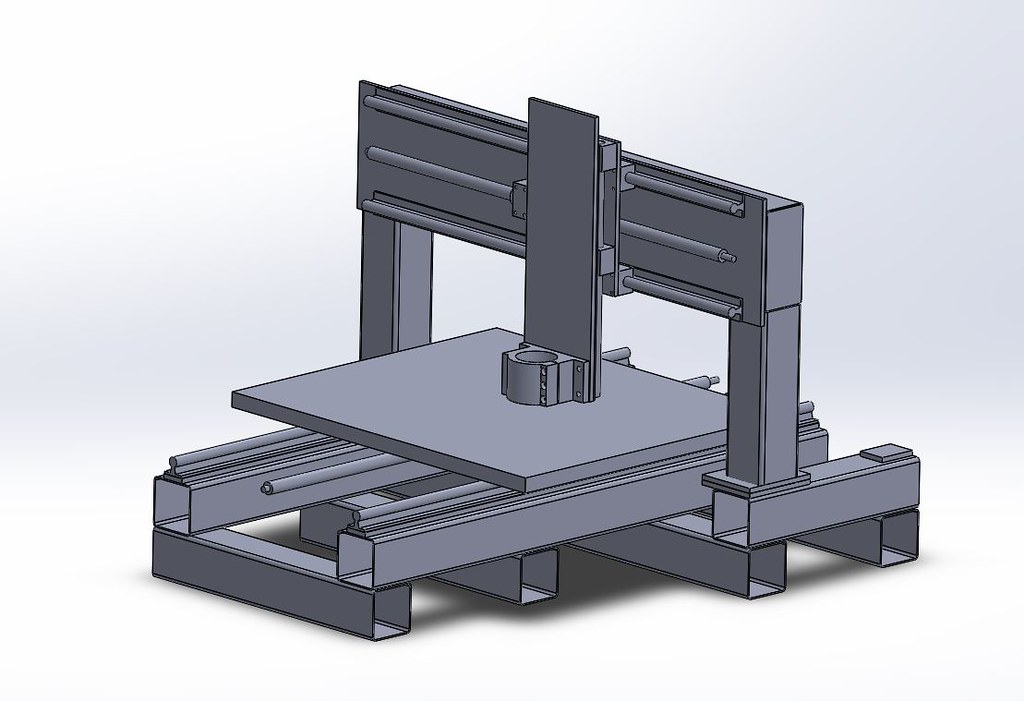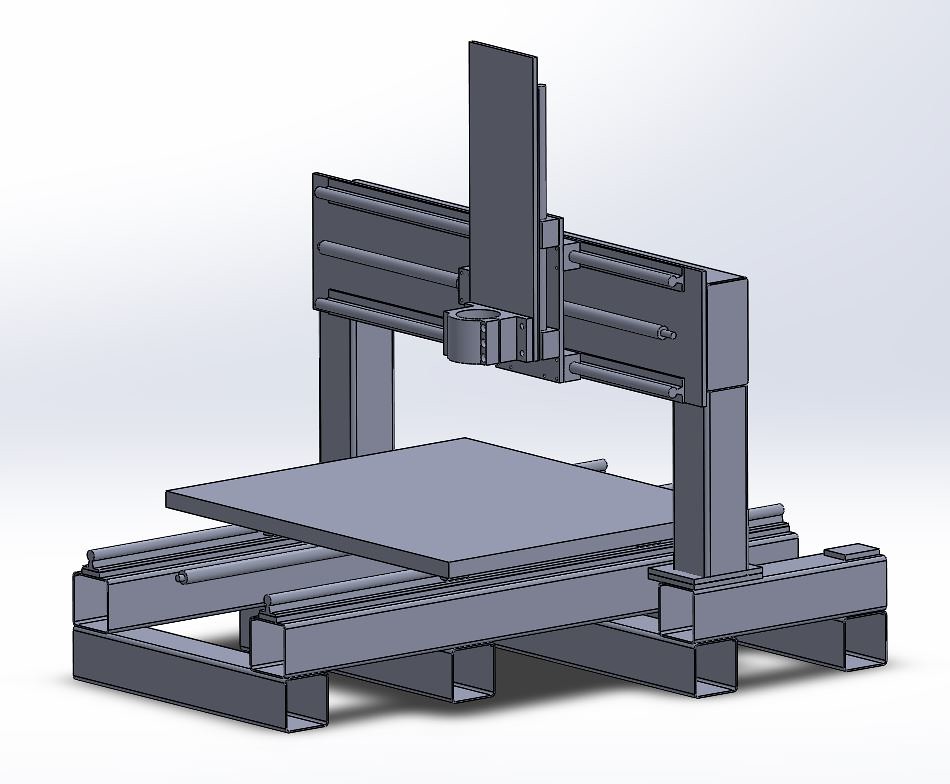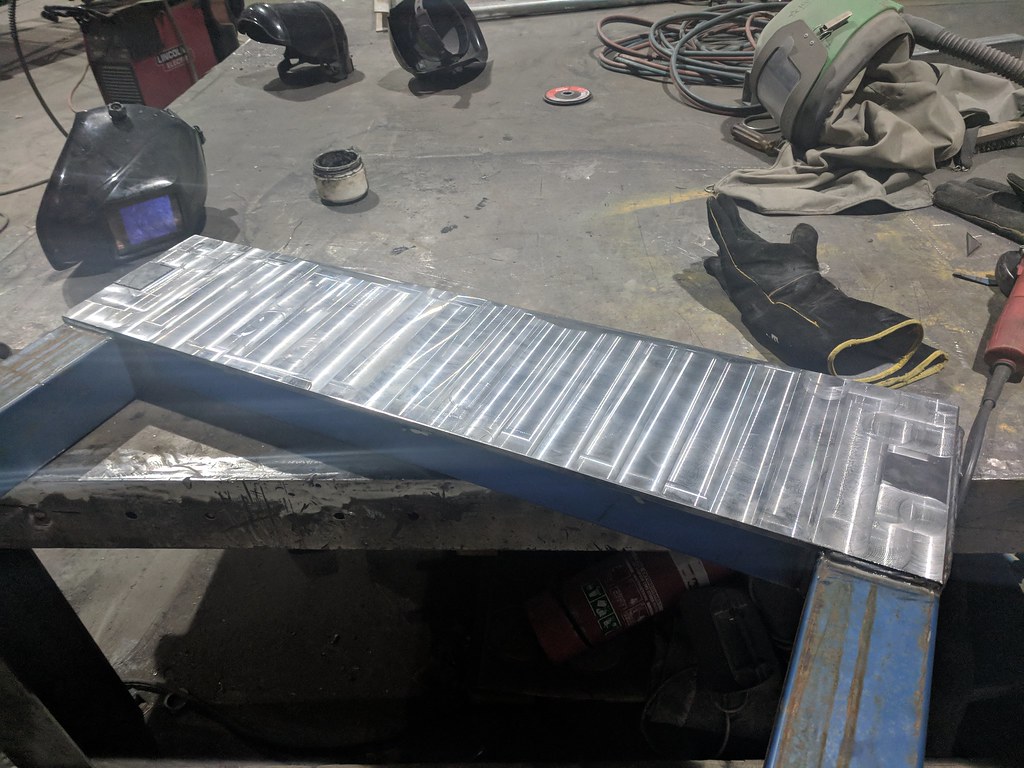Hi all,
I'm documenting my build on my website Barber Precision but I thought I'd also have a build thread here so I can get feedback or ask questions.
I've built a CNC plasma cutter before which turned out really good but I feel a router capable of machining aluminium will be more useful for the sort of projects I plan on doing.
I've been working on the design on and off for some time and finally got it to the stage where I'm happy to begin construction.
Before anyone mentions it, the gantry IS going to have back stays which go to the plates at the rear of the machine - I just haven't put them in the model yet. The Z axis setup is also slightly modified from this as-well. I'll get a snapshot of the changes tomorrow.
Many of the design choices revolve around ease of manufacture with the tools I have available, and budget constraints (round rail vs profile rail). I've designed the machine to be easily upgradeable to profile rails at a later date, and to have the surfaces on which the rails are mounted easily machined/ground perfectly flat at the same time.
The main frame is 100 x 100 x 3 tubing with 50x10 flatbar welded where the rails go, again so they can be machined flat at a later date if necessary and to provide material to tap threads.
The main gantry piece is 200 x 100 x 6 RHS with a 250 x 10 flatbar welded onto the front face. This will allow easy mounting of any sort of rail, and the 10-16mm material will be plenty for holding strong threads.
I stitch welded the flatbar onto the RHS to minimise warping - I believe it will be fine, but if there are any issues it's a simple matter to fully weld the piece on.
The end caps are welded on
And then the legs were attached.
So far I have about 2 hours work in the gantry and it still needs holes drilled and tapped for the linear rails. Once that's done I can attach the feet and start putting together the y/z axis. I might make the base frame last because it's all going to be pretty heavy once it's all put together. I'd estimate the gantry weighs about 50kg already!
Currently the Y and Z axis pieces are going to be 10mm aluminium plate because that's what i have available. I'll put stiffener plates on either side and possibly in the middle to gain some rigidity, but if I end up upgrading to profile rails I'll go with 16mm or 20mm if I can get it.
Any and all feedback on the design is welcome. If I haven't made it yet I'm happy to modify the design if anyone can spot anything that could be improved!
Thread: Welded steel frame router build
Results 1 to 20 of 95
Hybrid View
-
08-30-2018, 12:32 PM #1
 Registered
Registered
- Join Date
- Oct 2005
- Posts
- 73
Welded steel frame router build
-
08-30-2018, 01:49 PM #2
 Registered
Registered
- Join Date
- Dec 2014
- Posts
- 640
Re: Welded steel frame router build
Looking forward to seeing the rest of the build!
-
09-06-2018, 02:30 PM #3ericks Guest
Re: Welded steel frame router build
Looks great!
-
09-02-2018, 09:11 PM #4
 Gold Member
Gold Member
- Join Date
- May 2005
- Posts
- 3920
Re: Welded steel frame router build
Wow, you are off to a nice start!
One suggestion, when you weld flanges on to the gantry supporting tubes make them big enough for the mounting screws and provide room for some jack screws. This will allow you to square up the Y axis with the X axis to a high degree of precision, this especially if you don't have access to a machine shop to machine the feet square. Once you have the machine squared up to your satisfaction you can epoxy grout the gap. Frankly it isn't uncommon to see this approach used on professional installations.
Other suggests are:
- Drill some holes in your steel facing plates and plug weld them to the beam.
- The steel beams could use some internal gussets to prevent going trapezoidal, your end plates will likely take care of most of that but an internal plate in the center might be in order. (obviously late with this suggestion so don't worry too much about it.)
- Try to scare up profile rails for that gantry! The reason here is that you have a really nice start here and as such might as well finish it off. Done right the gantry will remain the same through multiple machine revisions.
In any event looks like you have a well thought out design, leveraging the material at hand.
-
09-02-2018, 11:43 PM #5
 Registered
Registered
- Join Date
- Oct 2005
- Posts
- 73
Re: Welded steel frame router build
Thanks mate, what I might do is drill through the gantry in a few places and weld some round bar in, triangulating the square section. I've got an idea to stiffen up the base where the gantry attaches to the base which should work well.
Very good idea about the jack screws. I was going to use shims but that seems like a much better idea and should be quicker to get the machine adjusted properly.
As far as the profile rail goes I completely agree, but it's ~ $2,000 extra (the rail + having the gantry/base machined, or self levelling epoxy) that I don't currently have and I've got the round rail left over from a previous project. Once I have the machine up and running and can prove to myself that I can use it to make usable / sellable parts then I'll look at upgrading.
I've seen videos of round rail machines cutting aluminium and they were much less substantial than this one. Perhaps not as heavy cuts and not as quickly as if I had profile rail but it will get me started. I can then use the machine to make the conversion parts at a later date Originally Posted by ger21
Originally Posted by ger21

After work today I'll be fabricating the main structure of the base.
-
09-02-2018, 09:14 PM #6
 Community Moderator
Community Moderator
- Join Date
- Mar 2003
- Posts
- 35538
Re: Welded steel frame router build
All that heavy steel will be wasted by using the round linear rails. They just aren't nearly rigid enough for an aluminum cutting machine.
Gerry
UCCNC 2017 Screenset
http://www.thecncwoodworker.com/2017.html
Mach3 2010 Screenset
http://www.thecncwoodworker.com/2010.html
JointCAM - CNC Dovetails & Box Joints
http://www.g-forcecnc.com/jointcam.html
(Note: The opinions expressed in this post are my own and are not necessarily those of CNCzone and its management)
-
09-03-2018, 02:23 AM #7
 Registered
Registered
- Join Date
- Oct 2005
- Posts
- 73
-
09-03-2018, 02:44 AM #8
 Community Moderator
Community Moderator
- Join Date
- Mar 2003
- Posts
- 35538
Re: Welded steel frame router build
Why is the Z axis so tall?
Gerry
UCCNC 2017 Screenset
http://www.thecncwoodworker.com/2017.html
Mach3 2010 Screenset
http://www.thecncwoodworker.com/2010.html
JointCAM - CNC Dovetails & Box Joints
http://www.g-forcecnc.com/jointcam.html
(Note: The opinions expressed in this post are my own and are not necessarily those of CNCzone and its management)
-
09-03-2018, 03:02 AM #9
 Registered
Registered
- Join Date
- Oct 2005
- Posts
- 73
-
09-03-2018, 10:47 AM #10
 Registered
Registered
- Join Date
- Oct 2005
- Posts
- 73
Re: Welded steel frame router build
Got the 100x100x3 cut to length for most of the main base pieces, I also capped all the ends for rigidity.
Tomorrow I'll grind all the welds down where necessary and weld the base together. Hopefully I can get the flatbar rail mounts welded on as well


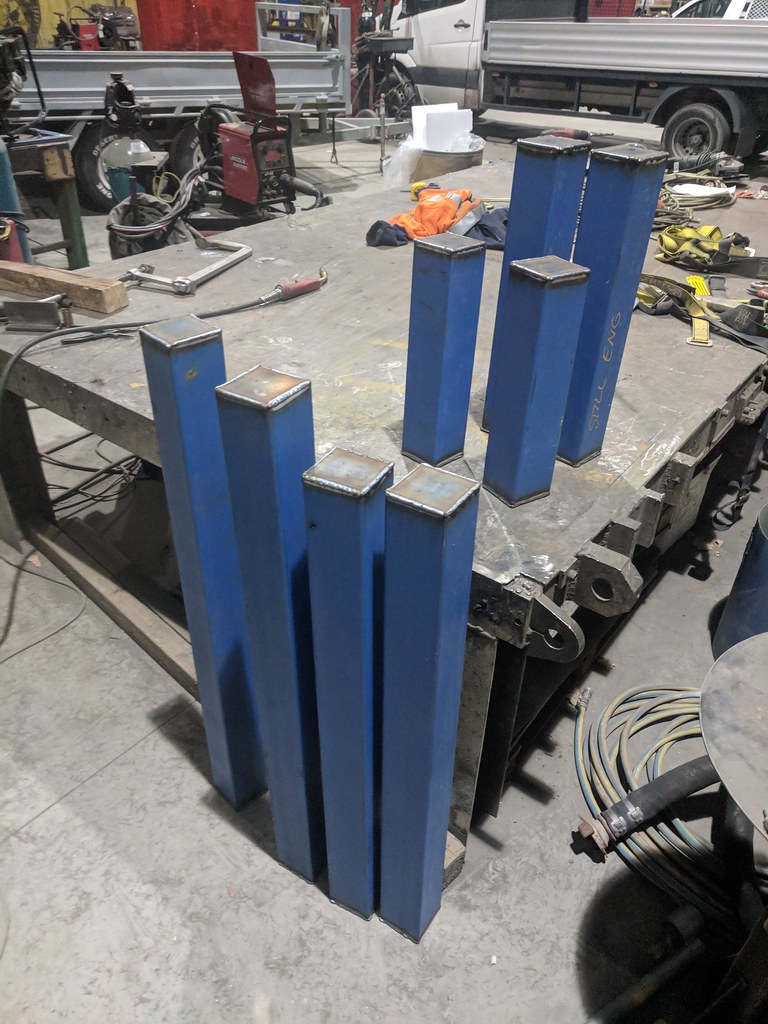
This is going to be one HEAVY bit of kit for a router with 700x800x250 travel. I hope when it has profile rails it will be a very capable machine.
The round rails I'll be running initially are 20mm diameter all round.
-
09-03-2018, 06:49 PM #11
 Gold Member
Gold Member
- Join Date
- May 2005
- Posts
- 3920
Re: Welded steel frame router build
20 mm round rail isn't very heavy at all for a router this size. While i can understand going cheap initially just understand that this will be a weak point in your machine. I understand using what you have on hand so im not dismissing the round rails just that those rails might not give you the results that you need or want.
The idea behind doing just the gantry with profile rails is the bigger payoff for a structure already capable of supporting the rails. The welding you have done likely has that facing plate convex on the beam. Depending on how bad that distortion is you may be able to flatten it with hand methods (scrapping and maybe a power sander). It would be a lot of work and you would need a good reference surface. Also welding down the center may pull some of that crown back.
In any event you have a very interesting build here, hope to see more soon.
-
09-03-2018, 11:00 PM #12
 Registered
Registered
- Join Date
- Oct 2005
- Posts
- 73
Re: Welded steel frame router build
Thanks for the feedback man, I really appreciate it!
I totally agree with you with regards to the profile/round rail issue. My problem here in Australia is postage cost - I can't justify getting one set now and more later, doubling up on postage so I'll be buying them all together later on.
so I'll be buying them all together later on.
In the mean time I'll be keeping an eye out for some decent 2nd hand ones but, again, being in Australia it's a rare thing to see on ebay.
I definitely want to plug weld the front piece in a few places, I should have done that initially but I thought that since the rails are mounting almost directly above the welds to the 200 x 100 I'd get away with it. I didn't factor in the distortion across the crown because it doesn't affect round rails, but you're dead right about getting it done for the profile rails and it's much easier to do it before the machine is assembled any further.
-
09-15-2018, 05:58 AM #13ericks Guest
Re: Welded steel frame router build
Jones....great job!! I love what you doing

-
09-18-2018, 12:17 PM #14
 Registered
Registered
- Join Date
- Oct 2005
- Posts
- 73
Re: Welded steel frame router build
-
09-20-2018, 12:24 PM #15
 Registered
Registered
- Join Date
- Mar 2010
- Posts
- 22
-
09-04-2018, 11:55 AM #16
 Registered
Registered
- Join Date
- Oct 2005
- Posts
- 73
Re: Welded steel frame router build
Today I spent 2 hours making the frame. After grinding the welds on the end caps smooth I tack welded the longitudinal members to the welding table (it's a solid 120mm thick piece of steel)
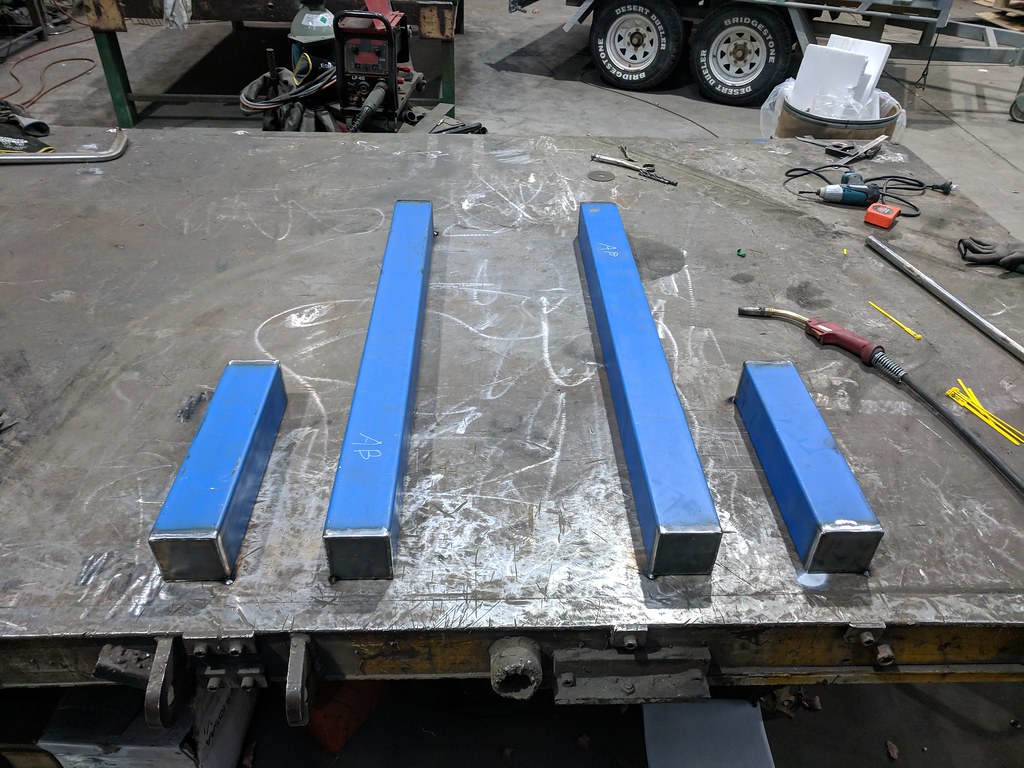
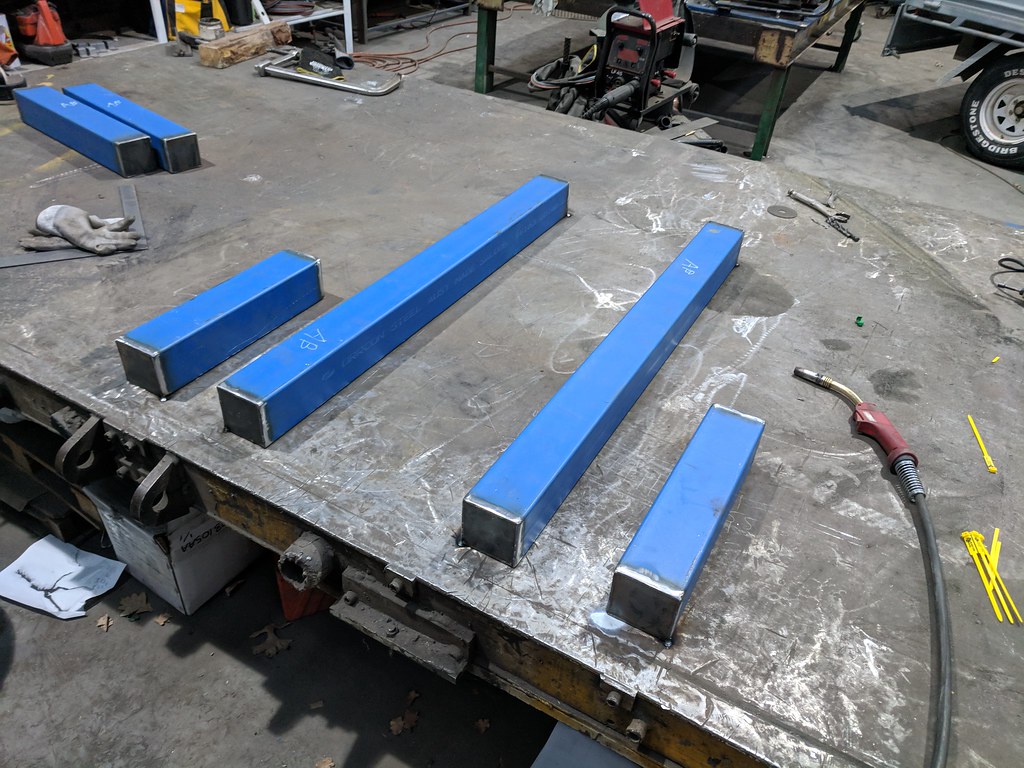
Then I tack welded the pieces on top, making sure they were square to the longitudinal pieces
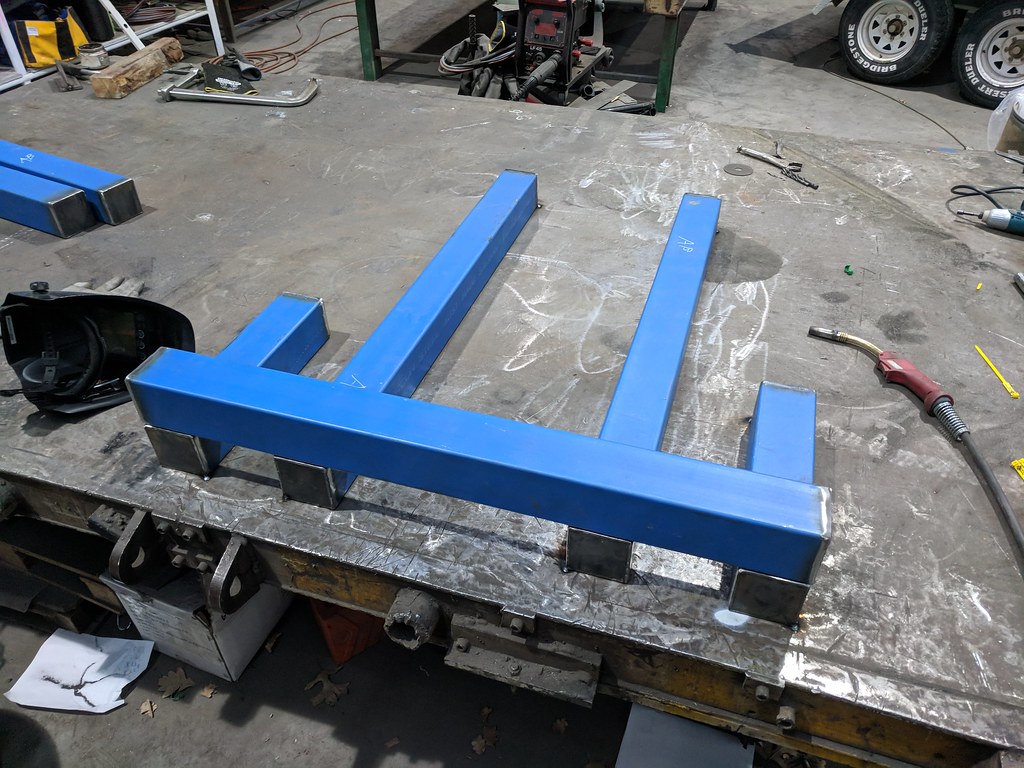
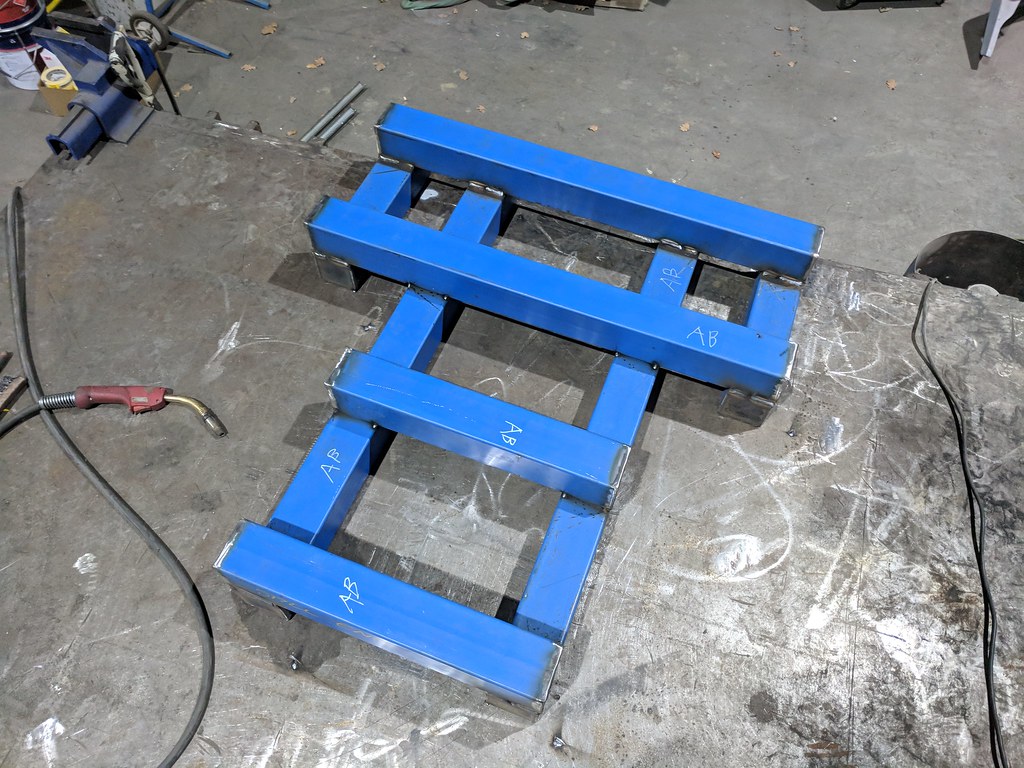
Once I'd fully welded the assembly from underneath, except for a couple in the middle I skipped to avoid warping the assembly, I flipped it over and proceeded to finish welding.
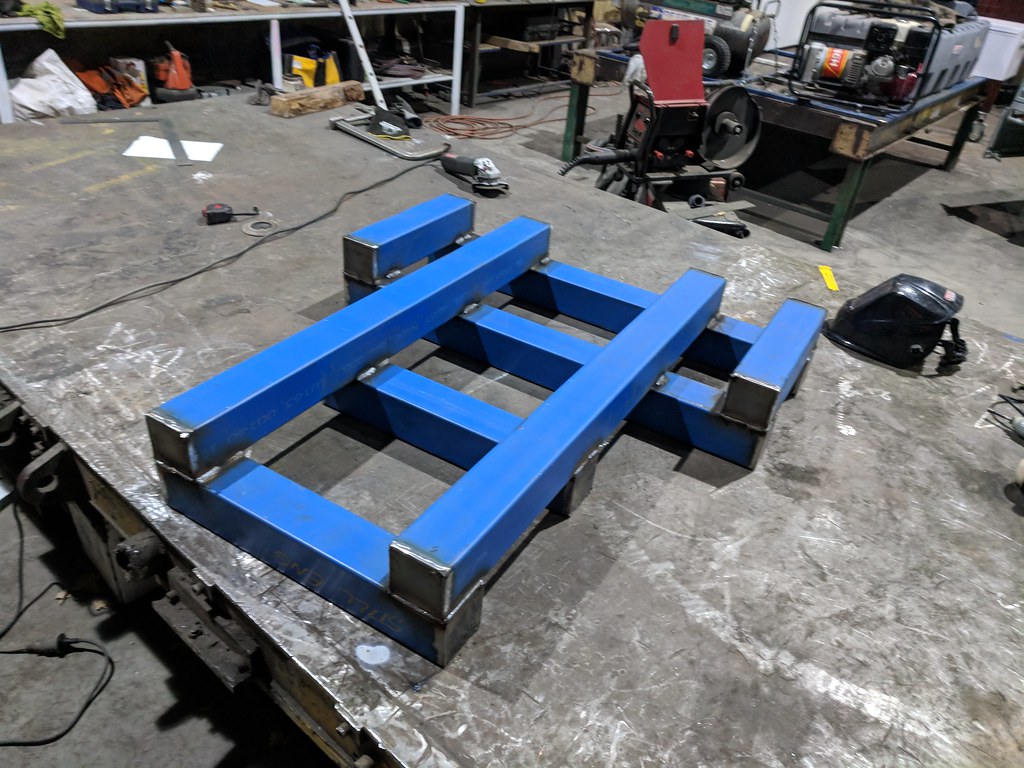
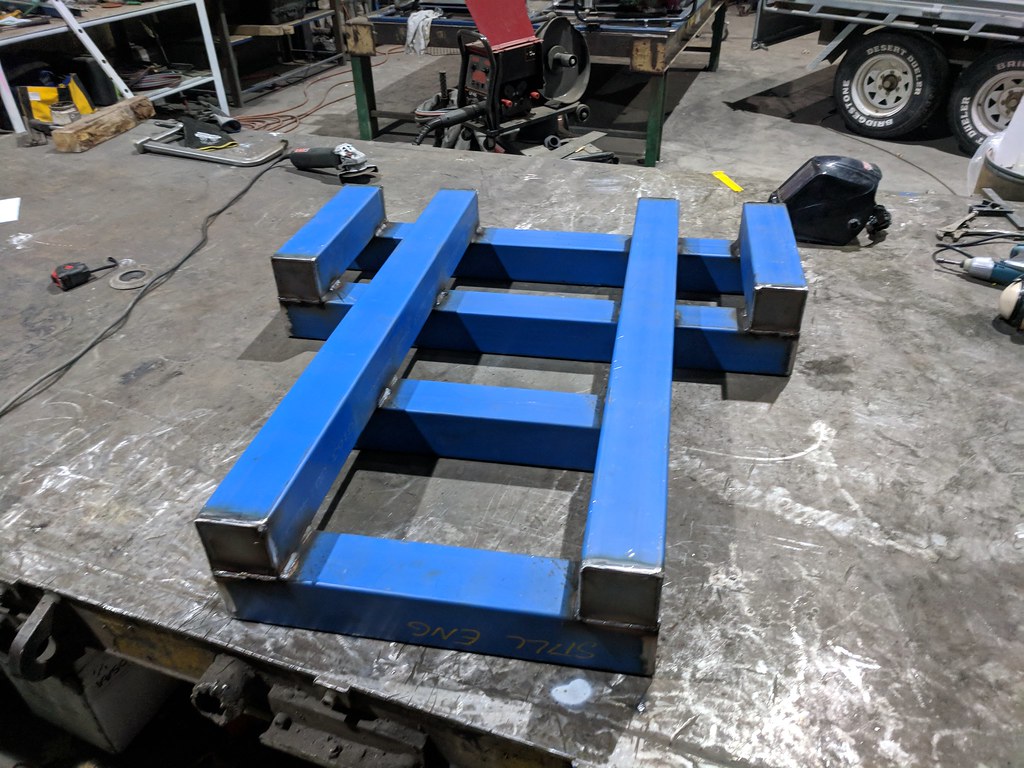
I jumped around the base when welding, only doing 50mm runs at a time to minimise heat input. It seems to have worked because the main longitudinal members don't have any noticeable bow in them. I'll still have to epoxy or grind the mounting surfaces when I go with profile rail, but for round rail I believe it will be fine.
There are a few more reinforcing members I'd like to weld in tomorrow and I'll try to get the flatbar rail mounts welded on as well. If I have time I'll weld on the mounting plates for the gantry, my goal is to have the gantry and base completely welded by Thursday evening.
-
09-13-2018, 08:47 PM #17
 Registered
Registered
- Join Date
- Apr 2010
- Posts
- 17
-
09-15-2018, 01:49 AM #18
 Registered
Registered
- Join Date
- Jan 2007
- Posts
- 4
Re: Welded steel frame router build
I worked at a job where they were anal about reducing welding to avoid distortion and save time.
A few suggestions to others from what I learned too many years ago.
1) On the end caps. Crop the corners of the end caps. On a 100x100 square you can crop 20mm off each end of each corner. Welding in the corner is harder and provides almost no additional stiffness. Now you have welded 240mm of weld versus 400mm. [(100-(2x20)) x 4] That is a 40% saving, with no reduction in strength or stiffness. If you are buying the wire /electrode and the shielding gas that is a big saving in money.
2) On the end caps. Fit them just inside the ends about 8 mm. A fillet weld is about 1/3 to 1/4 the weld volume of an outside corner weld and requires no grinding. It then saves time and grinding wheels as well. Combine this with Item 1 and you will save almost 60% of the welding.
3) On continuous welds. Stitching is good, but with 3mm material, the stitches should be about 30mm max, probably less.
4) On continuous welds, backstep. So a 30mm or shorter weld is made. You move somewhere else and make another 30mm weld. Continue all over the assembly. Now come back to the first and move 30mm away from the previous weld. Then weld back to the previous weld. The previous weld has locked the joint. When you start the back step weld, the parent metal is cold. When you reach the previous weld, the parent metal is getting hot. It cannot distort because it is locked by the previous, now cold, weld.
5) Use chalk and label the weld sequence in advance. So 1, 2, 3, etc. Go diagonally in a symmetrical pattern. Think of the sequence used in torquing down a 6 cylinder engine head.
6) Weld fillet size appears a bit oversize all over. The basic rule of thumb is the fillet size is 1.5mm smaller than the thinner of the 2 materials. Here we have 3mm to 3mm and other sizes to 3mm. So the full strength fillet weld is about 1.5 to 2mm
7) When making any brackets to fit between 2 adjacent pieces, such as 90 degree corner brace, crop the corner at least 20 percent back. You can't weld in there, you don't need to grind off the existing weld, and you save time and reduce the weight of the structure. Strength and stiffness do not change. Time and materials change.
How to determine the approximate backstep length is to observe the back of the material while it is being welded. When it starts to glow red on the back size and clearly show the weld heat, stop. It is when the base material gets red hot that distortion is introduced.
When welding heavy section or thicknesses, like 8 or 10mm stock to 3mm stock, the limiting strength factor is the 3mm material. So the fillet size is determined by that thinner material. It seems counter intuitive to use a 2mm weld when fastening an 8mm plate to the 3mm thick thin material, but it is correct.
Just my thoughts on how to build faster, easier, and cheaper.
What you have done will work very well. It is just that I am lazy and usually pressed for time, so I want all the work savings I can find. Many others are in the same mindset.
Regards
-
09-18-2018, 12:16 PM #19
 Registered
Registered
- Join Date
- Oct 2005
- Posts
- 73
Re: Welded steel frame router build
Wow great info! Some of it I already knew but I'm saving this all for the next time I need to make a welded assembly, cheers!
Thanks man! Originally Posted by ericks
Originally Posted by ericks
Today I got quite a bit done after work! I welded in some diagonal stiffeners
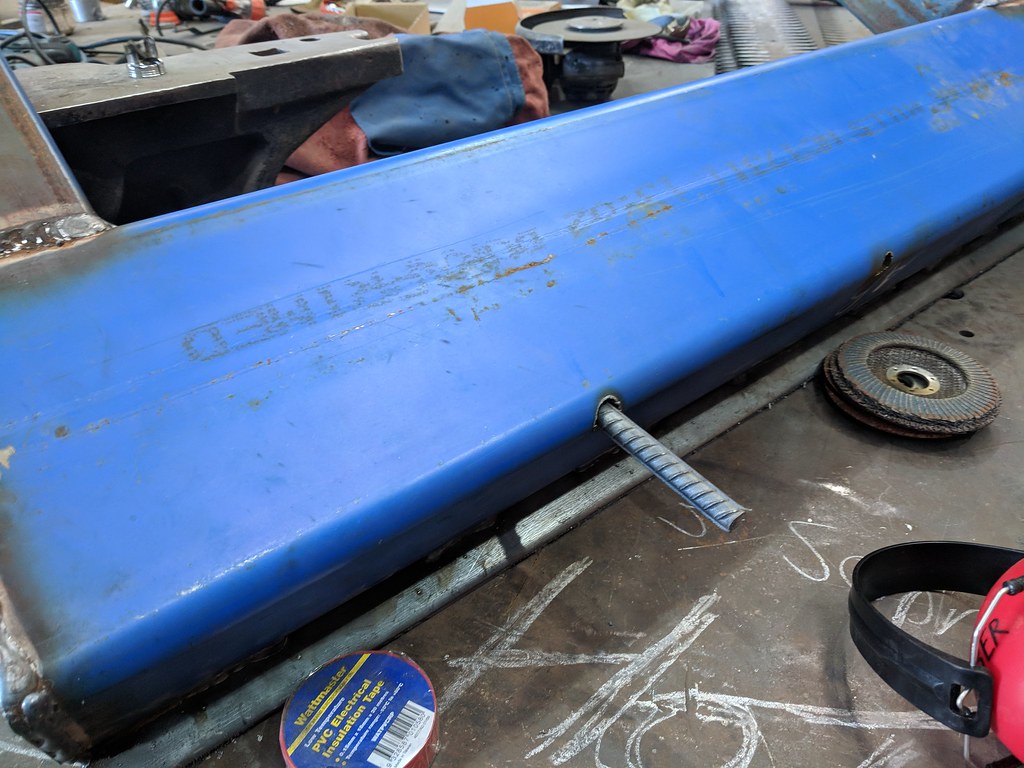
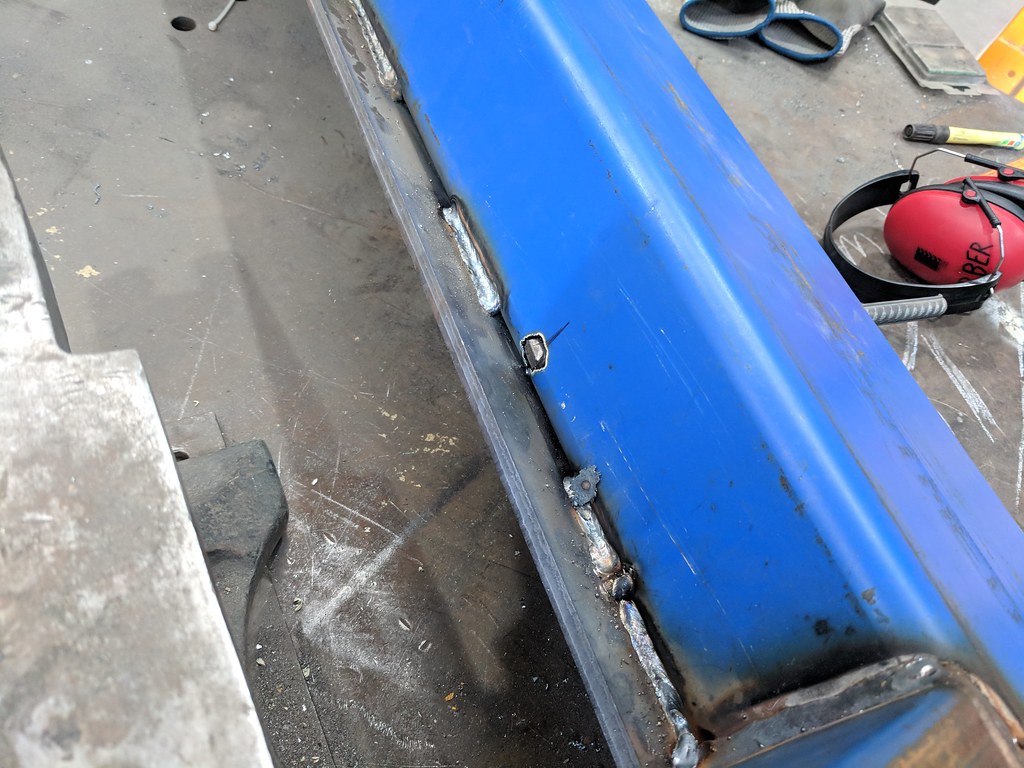
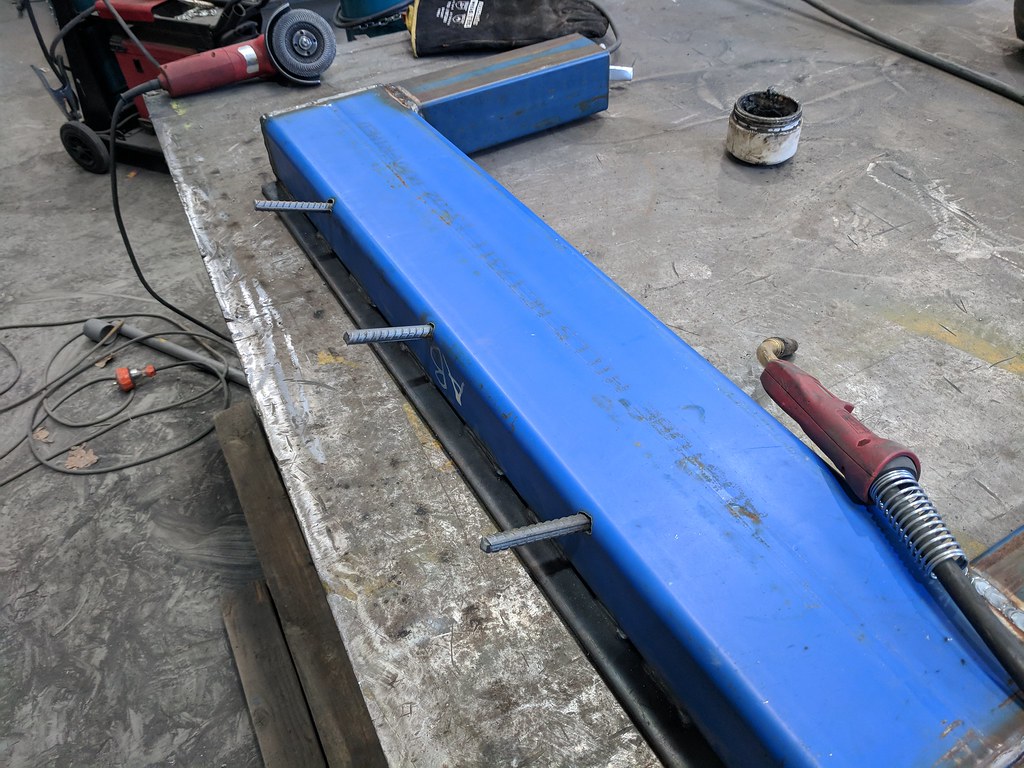
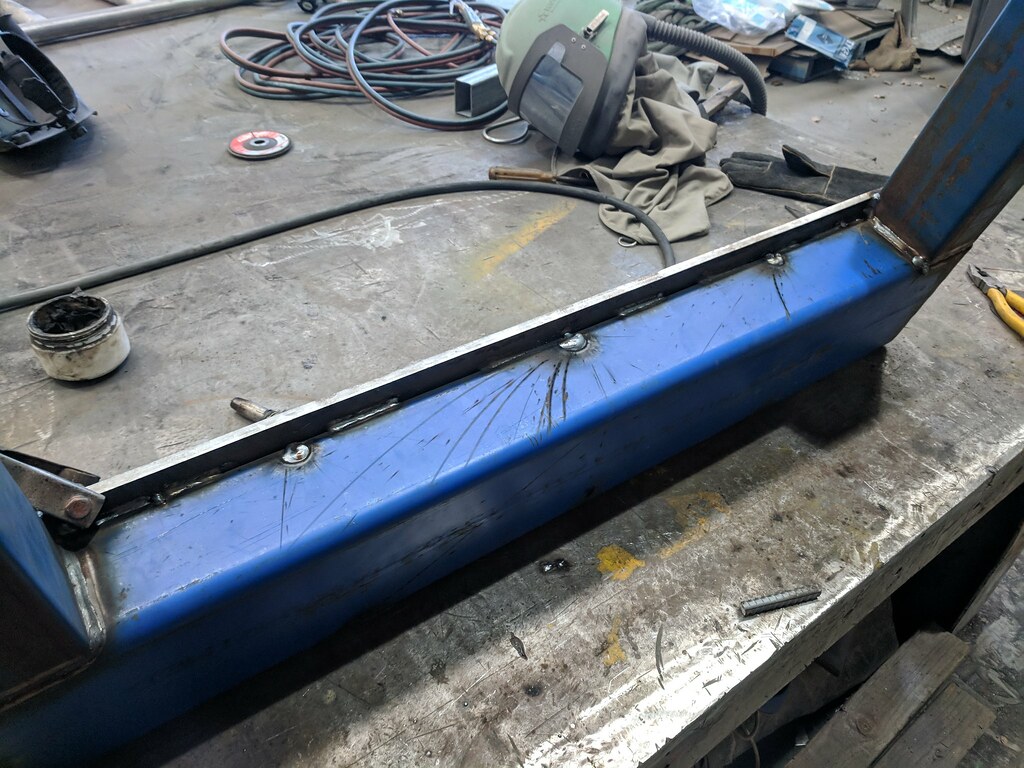
Cut them off, welded them in and then ground the outside smooth.
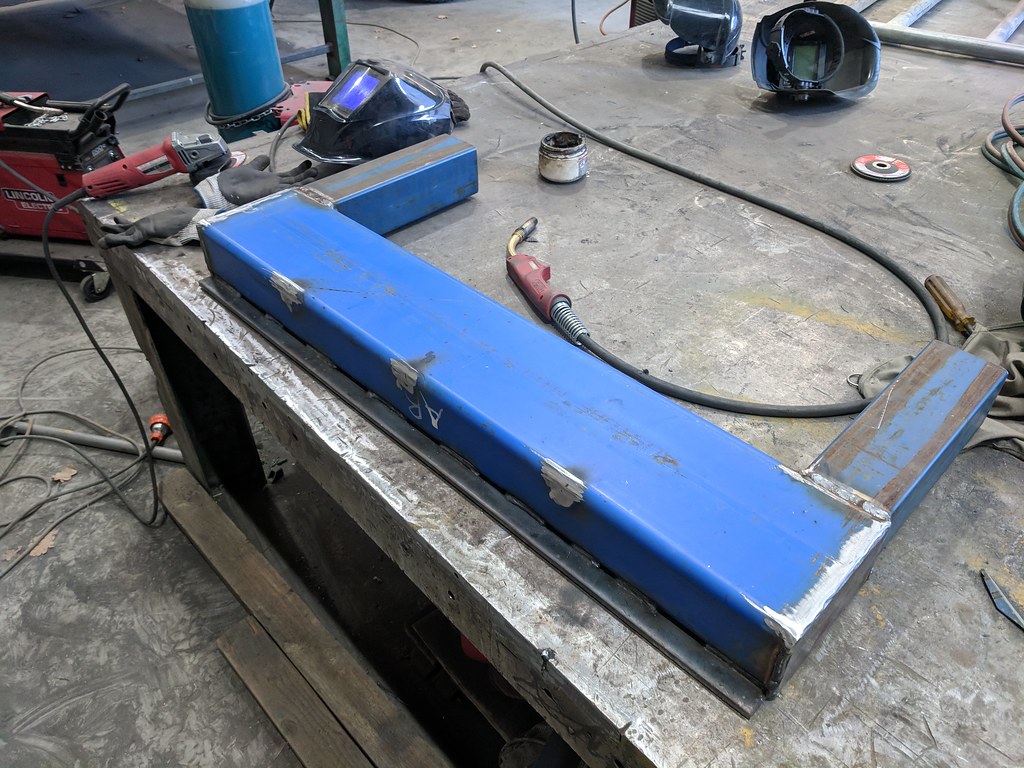
Then I plasma cut out some additional mounting brackets


And welded them onto the base frame

Then I decided to try to machine the mounting face for the rails on the gantry
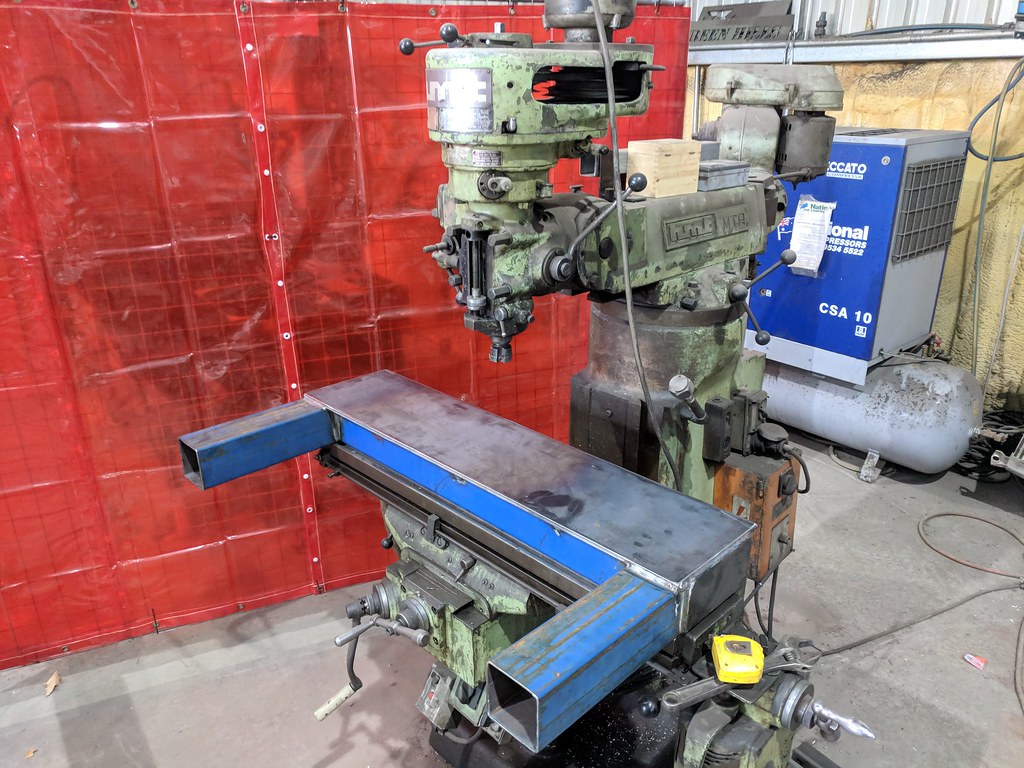
From this pic you can clearly see how not-flat the surface was



That's getting a bit better

Continued...
-
12-06-2018, 08:33 PM #20
 Registered
Registered
- Join Date
- Apr 2010
- Posts
- 17
Similar Threads
-
Steel Frame Router Build
By trailerparkboys in forum CNC Wood Router Project LogReplies: 1Last Post: 03-08-2016, 01:53 PM -
Steel frame Ganrty router build
By matth in forum CNC Wood Router Project LogReplies: 172Last Post: 10-30-2014, 08:32 PM -
My First All Welded Steel Router Design
By widgitmaster in forum CNC Wood Router Project LogReplies: 9Last Post: 10-18-2008, 03:07 PM










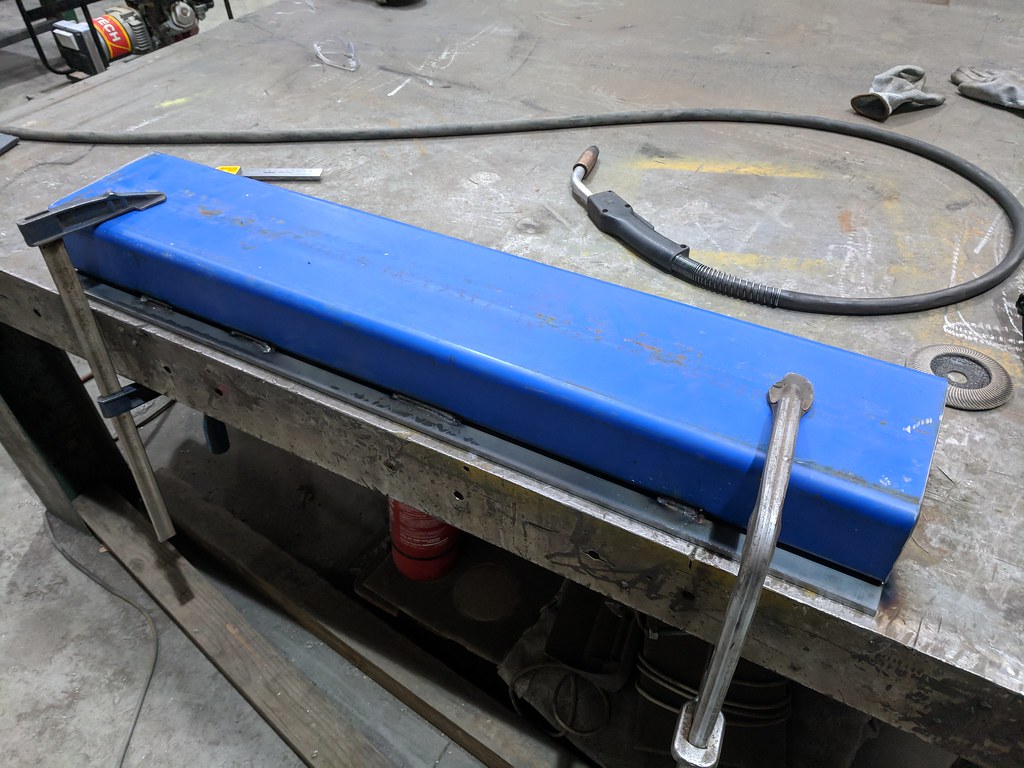

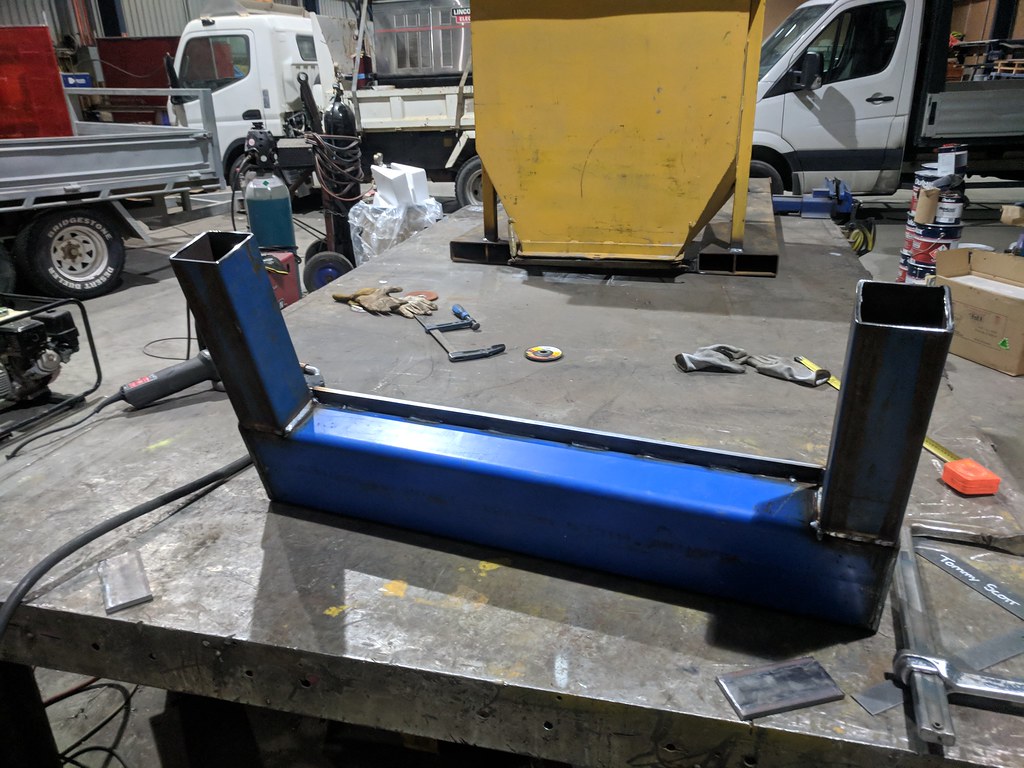
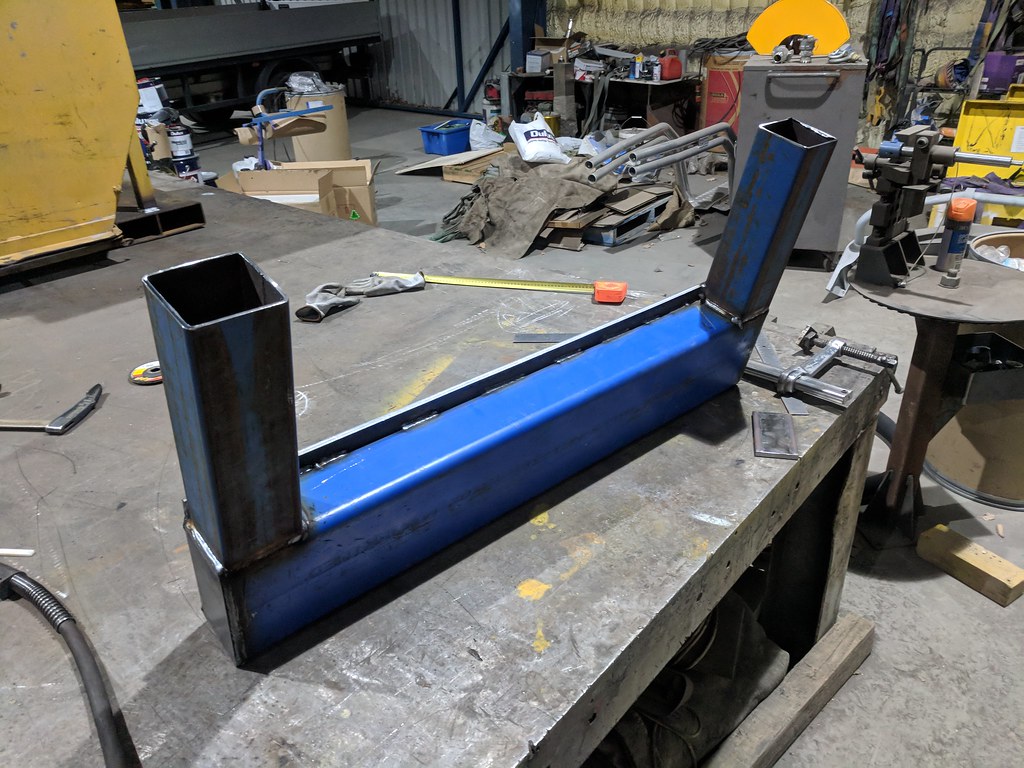
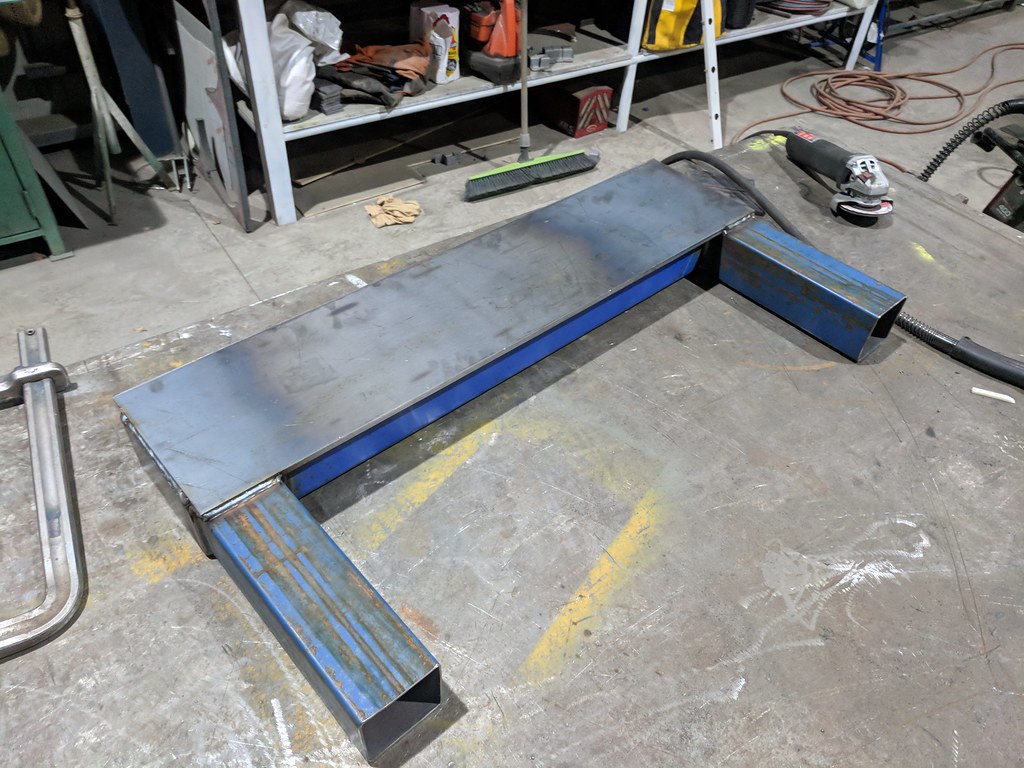

 Reply With Quote
Reply With Quote
